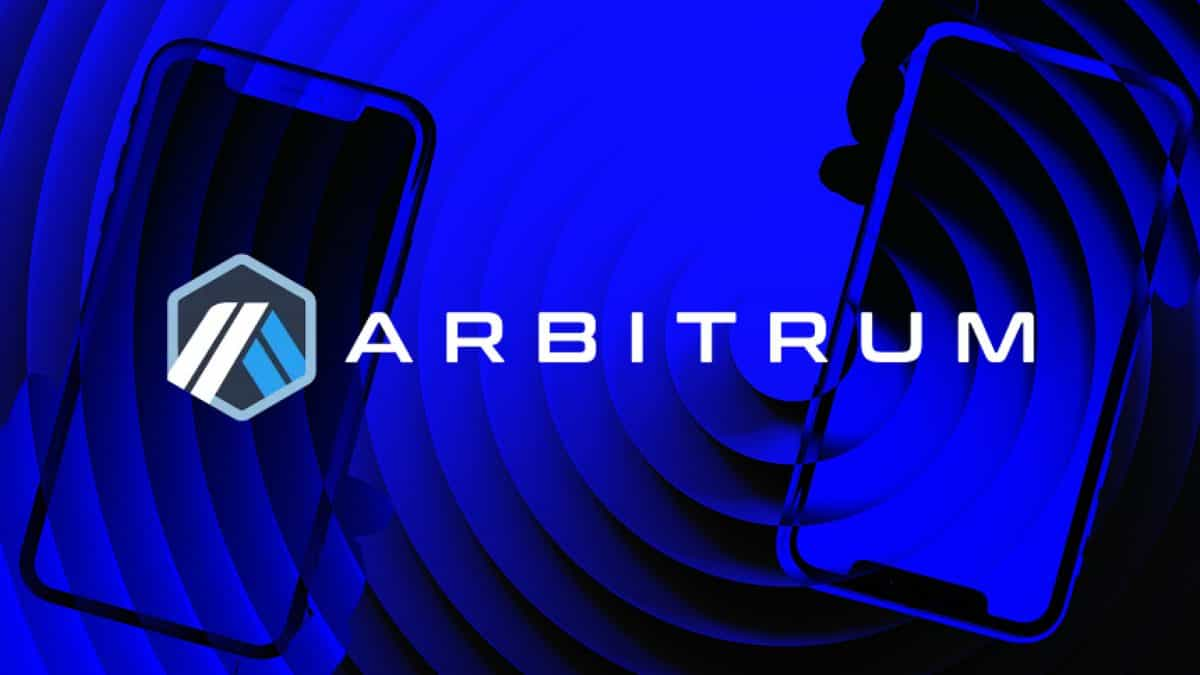Bitget:全球日交易量排名前 4!
BTC 市占率61.82%
Bitget 新幣上架 : Pi Network
BTC/USDT$85107.98 (+0.99%)恐懼與貪婪指數44(恐懼)
山寨季指數:0(比特幣季)
盤前交易幣種PAWS,WCT比特幣現貨 ETF 總淨流量:-$157.8M(1 天);-$22M(7 天)。Bitget 新用戶立享 6,200 USDT 歡迎禮包!立即領取
到 Bitget App 隨時隨地輕鬆交易!立即下載
Bitget:全球日交易量排名前 4!
BTC 市占率61.82%
Bitget 新幣上架 : Pi Network
BTC/USDT$85107.98 (+0.99%)恐懼與貪婪指數44(恐懼)
山寨季指數:0(比特幣季)
盤前交易幣種PAWS,WCT比特幣現貨 ETF 總淨流量:-$157.8M(1 天);-$22M(7 天)。Bitget 新用戶立享 6,200 USDT 歡迎禮包!立即領取
到 Bitget App 隨時隨地輕鬆交易!立即下載
Bitget:全球日交易量排名前 4!
BTC 市占率61.82%
Bitget 新幣上架 : Pi Network
BTC/USDT$85107.98 (+0.99%)恐懼與貪婪指數44(恐懼)
山寨季指數:0(比特幣季)
盤前交易幣種PAWS,WCT比特幣現貨 ETF 總淨流量:-$157.8M(1 天);-$22M(7 天)。Bitget 新用戶立享 6,200 USDT 歡迎禮包!立即領取
到 Bitget App 隨時隨地輕鬆交易!立即下載


SideShift Token 價格XAI
未上架
報價幣種:
TWD
數據來源於第三方提供商。本頁面和提供的資訊不為任何特定的加密貨幣提供背書。想要交易已上架幣種? 點擊此處
NT$4.66-0.01%1D
價格走勢圖
最近更新時間 2025-04-02 10:06:58(UTC+0)
市值:NT$672,044,646.06
完全稀釋市值:NT$672,044,646.06
24 小時交易額:NT$750,603.24
24 小時交易額/市值:0.11%
24 小時最高價:NT$4.7
24 小時最低價:NT$4.64
歷史最高價:NT$12.71
歷史最低價:NT$2.25
流通量:144,299,740 XAI
總發行量:
210,000,000XAI
流通率:68.00%
最大發行量:
210,000,000XAI
以 BTC 計價:0.{5}1654 BTC
以 ETH 計價:0.{4}7481 ETH
以 BTC 市值計價:
NT$387,361.68
以 ETH 市值計價:
NT$52,059.57
合約:
0x35e7...cdbe232(Ethereum)
您今天對 SideShift Token 感覺如何?
注意:此資訊僅供參考。
SideShift Token 今日價格
SideShift Token 的即時價格是今天每 (XAI / TWD) NT$4.66,目前市值為 NT$672.04M TWD。24 小時交易量為 NT$750,603.24 TWD。XAI 至 TWD 的價格為即時更新。SideShift Token 在過去 24 小時內的變化為 -0.01%。其流通供應量為 144,299,740 。
XAI 的最高價格是多少?
XAI 的歷史最高價(ATH)為 NT$12.71,於 2024-01-24 錄得。
XAI 的最低價格是多少?
XAI 的歷史最低價(ATL)為 NT$2.25,於 2023-11-09 錄得。
SideShift Token 價格預測
XAI 在 2026 的價格是多少?
根據 XAI 的歷史價格表現預測模型,預計 XAI 的價格將在 2026 達到 NT$5.6。
XAI 在 2031 的價格是多少?
2031,XAI 的價格預計將上漲 +14.00%。 到 2031 底,預計 XAI 的價格將達到 NT$8.64,累計投資報酬率為 +85.33%。
SideShift Token 價格歷史(TWD)
過去一年,SideShift Token 價格上漲了 -23.30%。在此期間, 兌 TWD 的最高價格為 NT$7.01, 兌 TWD 的最低價格為 NT$2.72。
時間漲跌幅(%) 最低價
最低價 最高價
最高價 
 最低價
最低價 最高價
最高價 
24h-0.01%NT$4.64NT$4.7
7d-0.38%NT$4.62NT$4.75
30d-18.73%NT$4.59NT$5.87
90d-1.70%NT$4.59NT$7.01
1y-23.30%NT$2.72NT$7.01
全部時間-49.53%NT$2.25(2023-11-09, 1 年前 )NT$12.71(2024-01-24, 1 年前 )
SideShift Token 市場資訊
SideShift Token 持幣分布集中度
巨鯨
投資者
散戶
SideShift Token 地址持有時長分布
長期持幣者
游資
交易者
coinInfo.name(12)即時價格表

SideShift Token 評級
社群的平均評分
4.4
此內容僅供參考。
SideShift Token (XAI) 簡介
SideShift Token (SST): 創新加密貨幣的發展及貢獻
了解SideShift Token (SST)是了解其背後所代表的創新意義及加密貨幣的前景。
SideShift Token 的歷史意義
SideShift Token (SST)象徵加密貨幣世界的自由交易的精神,具有挑戰性的原創思維。當SST仍舊在籌劃階段,它的核心使命就是提供更有效率,更公平的貨幣交易平台。在區塊鏈界,SST得以發揮創新的挑戰者角色,不斷尋找新的解決方案,以回應不斷變化的經濟風景。
SideShift Token 的主要特徵
當前加密貨幣市場中,SST是獨一無二的存在。以下是SST主要的特點:
-
創新及兼具實用性的解決方案: SST不僅致力於創新,而且其發展的技術可在實際世界中運用,並為使用者提供真實的價值及回報。真正倡導加密貨幣的原創性及創新性。
-
去中心化: SST採用去中心化的方式,不受任何政府或中央機構的控制。這種自決經濟生態系統,讓每個人都能全力發揮其創新及創業的機會。
-
安全和隱私: 在SST,給予用戶隱私的最高保護。任何交易都透過高度加密的方法執行,以保護終端用戶的私密數據。
結論
隨著數字價值和去中心化經濟的興起,加密貨幣如SideShift Token (SST)的出現可以說是一種必然。是新經濟世界裡的原創探索者,是進程的先鋒、也是風向碼。SST已經成為區塊鏈技術的一面旗幟,代表著創新和前瞻的精神。
XAI 兌換當地法幣匯率表
1 XAI 兌換 MXN$2.861 XAI 兌換 GTQQ1.091 XAI 兌換 CLP$133.081 XAI 兌換 HNLL3.61 XAI 兌換 UGXSh513.861 XAI 兌換 ZARR2.61 XAI 兌換 TNDد.ت0.441 XAI 兌換 IQDع.د184.211 XAI 兌換 TWDNT$4.661 XAI 兌換 RSDдин.15.261 XAI 兌換 DOP$8.871 XAI 兌換 MYRRM0.631 XAI 兌換 GEL₾0.391 XAI 兌換 UYU$5.931 XAI 兌換 MADد.م.1.361 XAI 兌換 OMRر.ع.0.051 XAI 兌換 AZN₼0.241 XAI 兌換 KESSh18.171 XAI 兌換 SEKkr1.411 XAI 兌換 UAH₴5.82
- 1
- 2
- 3
- 4
- 5
最近更新時間 2025-04-02 10:06:58(UTC+0)
SideShift Token 動態

微軟正在測試來自XAI、Meta和DeepSeek的模型,作為Copilot中潛在的OpenAI替代品
Panews•2025-03-07 06:04

馬斯克 XAI 團隊推出 Grok 3:基準測試超越競業,可視化思考、懂創造新遊戲
Abmedia•2025-02-17 22:15

前納斯達克高管加入Arbitrum開發商,領導其風險工作室Tandem
快速摘要 Offchain Labs 聘請了前納斯達克數位資產負責人 Ira Auerbach 來領導其合作工作室和風險投資部門 Tandem。Tandem 旨在通過資金、技術專長和戰略指導支持區塊鏈項目。
The Block•2025-01-09 18:23

xAI正在澳大利亞和其他地區測試獨立的Grok iOS應用程式,該應用程式可以訪問互聯網和X的實時數據
Bitget•2024-12-30 05:32

Xai 更新 Sentry Key 規則,鑄造價格降至 0.0143 ETH
Bitget•2024-12-12 09:51
購買其他幣種
用戶還在查詢 SideShift Token 的價格。
SideShift Token 的目前價格是多少?
SideShift Token 的即時價格為 NT$4.66(XAI/TWD),目前市值為 NT$672,044,646.06 TWD。由於加密貨幣市場全天候不間斷交易,SideShift Token 的價格經常波動。您可以在 Bitget 上查看 SideShift Token 的市場價格及其歷史數據。
SideShift Token 的 24 小時交易量是多少?
在最近 24 小時內,SideShift Token 的交易量為 NT$750,603.24。
SideShift Token 的歷史最高價是多少?
SideShift Token 的歷史最高價是 NT$12.71。這個歷史最高價是 SideShift Token 自推出以來的最高價。
我可以在 Bitget 上購買 SideShift Token 嗎?
可以,SideShift Token 目前在 Bitget 的中心化交易平台上可用。如需更詳細的說明,請查看我們很有幫助的 如何購買 指南。
我可以透過投資 SideShift Token 獲得穩定的收入嗎?
當然,Bitget 推出了一個 策略交易平台,其提供智能交易策略,可以自動執行您的交易,幫您賺取收益。
我在哪裡能以最低的費用購買 SideShift Token?
Bitget提供行業領先的交易費用和市場深度,以確保交易者能够從投資中獲利。 您可通過 Bitget 交易所交易。
在哪裡可以購買加密貨幣?
影片部分 - 快速認證、快速交易

如何在 Bitget 完成身分認證以防範詐騙
1. 登入您的 Bitget 帳戶。
2. 如果您是 Bitget 的新用戶,請觀看我們的教學,以了解如何建立帳戶。
3. 將滑鼠移到您的個人頭像上,點擊「未認證」,然後點擊「認證」。
4. 選擇您簽發的國家或地區和證件類型,然後根據指示進行操作。
5. 根據您的偏好,選擇「手機認證」或「電腦認證」。
6. 填寫您的詳細資訊,提交身分證影本,並拍攝一張自拍照。
7. 提交申請後,身分認證就完成了!
加密貨幣投資(包括透過 Bitget 線上購買 SideShift Token)具有市場風險。Bitget 為您提供購買 SideShift Token 的簡便方式,並且盡最大努力讓用戶充分了解我們在交易所提供的每種加密貨幣。但是,我們不對您購買 SideShift Token 可能產生的結果負責。此頁面和其包含的任何資訊均不代表對任何特定加密貨幣的背書認可,任何價格數據均採集自公開互聯網,不被視為來自Bitget的買賣要約。
Bitget 觀點
Mahnoor-Baloch007
16小時前
AI agents and AI are related but distinct concepts in the field of artificial intelligence.
AI (Artificial Intelligence)
1. Definition: AI refers to the broad field of study focused on creating intelligent machines that can perform tasks that typically require human intelligence.
2. Characteristics: AI systems can process and analyze large amounts of data, learn from experiences, and make decisions based on that data.
3. Examples: AI-powered chatbots, image recognition systems, and natural language processing tools.
AI Agents
1. Definition: AI agents are a specific type of AI system that can autonomously perform tasks on behalf of a user or another system.
2. Characteristics: AI agents have the ability to design their own workflow, utilize available tools, and interact with external environments to achieve complex goals.
3. Examples: AI-powered trading bots, autonomous vehicles, and smart home systems.
Key Differences
1. Autonomy: AI agents have a higher level of autonomy compared to traditional AI systems, allowing them to make decisions and take actions independently.
2. Interactivity: AI agents can interact with their environment and other systems, whereas traditional AI systems may only process data internally.
3. Proactivity: AI agents can anticipate and prevent problems, whereas traditional AI systems may only react to problems after they occur.
4. Complexity: AI agents often require more complex decision-making and problem-solving capabilities compared to traditional AI systems.
In summary, while AI refers to the broader field of artificial intelligence, AI agents are a specific type of AI system that can autonomously perform tasks, interact with their environment, and make decisions independently.
Thank you...🙂
$BTC $ETH $SOL $PI $XRP $DOGE $SHIB $SUNDOG $MEME $AI $XAI $PEPECOIN $PIPPIN $ORAI $ETC $WHY $U2U
SUNDOG+5.72%
BTC-0.05%

Crypto_inside
1天前
Machine learning ❌ Traditional learning. 🧐😵💫
Machine learning and traditional learning are two distinct approaches to learning and problem-solving.
Traditional Learning:
1. Rule-based: Traditional learning involves explicit programming and rule-based systems.
2. Human expertise: Traditional learning relies on human expertise and manual feature engineering.
3. Fixed models: Traditional learning uses fixed models that are not updated automatically.
Machine Learning:
1. Data-driven: Machine learning involves learning from data and improving over time.
2. Algorithmic: Machine learning relies on algorithms that can learn from data and make predictions.
3. Adaptive models: Machine learning uses adaptive models that can update automatically based on new data.
Key Differences:
1. Learning style: Traditional learning is rule-based, while machine learning is data-driven.
2. Scalability: Machine learning can handle large datasets and complex problems, while traditional learning is limited by human expertise.
3. Accuracy: Machine learning can achieve higher accuracy than traditional learning, especially in complex domains.
Advantages of Machine Learning:
1. Improved accuracy: Machine learning can achieve higher accuracy than traditional learning.
2. Increased efficiency: Machine learning can automate many tasks, freeing up human experts for more complex tasks.
3. Scalability: Machine learning can handle large datasets and complex problems.
Disadvantages of Machine Learning:
1. Data quality: Machine learning requires high-quality data to learn effectively.
2. Interpretability: Machine learning models can be difficult to interpret and understand.
3. Bias: Machine learning models can perpetuate biases present in the training data.
When to Use Machine Learning:
1. Complex problems: Machine learning is well-suited for complex problems that require pattern recognition and prediction.
2. Large datasets: Machine learning can handle large datasets and identify trends and patterns.
3. Automating tasks: Machine learning can automate many tasks, freeing up human experts for more complex tasks.
When to Use Traditional Learning:
1. Simple problems: Traditional learning is well-suited for simple problems that require explicit programming and rule-based systems.
2. Small datasets: Traditional learning is suitable for small datasets where machine learning may not be effective.
3. Human expertise: Traditional learning relies on human expertise and manual feature engineering, making it suitable for domains where human expertise is essential.
Thank you...🙂
$BTC $ETH $SOL $PI $AI $XAI $BGB $BNB $DOGE $DOGS $SHIB $BONK $MEME $XRP $ADA $U2U $WUF $PARTI $WHY
BTC-0.05%
BGB-1.26%

Crypto_inside
1天前
What is Q-learning...🤔🤔??
Q-learning is a type of reinforcement learning algorithm used in machine learning and artificial intelligence. It's a model-free, off-policy learning algorithm that helps agents learn to make decisions in complex, uncertain environments.
Key Components:
1. Agent: The decision-maker that interacts with the environment.
2. Environment: The external system with which the agent interacts.
3. Actions: The decisions made by the agent.
4. Rewards: The feedback received by the agent for its actions.
5. Q-function: A mapping from states and actions to expected rewards.
How Q-learning Works:
1. Initialization: The agent starts with an arbitrary Q-function.
2. Exploration: The agent selects an action and observes the resulting state and reward.
3. Update: The agent updates its Q-function based on the observed reward and the expected reward for the next state.
4. Exploitation: The agent chooses the action with the highest Q-value for the current state.
Advantages:
1. Simple to implement: Q-learning is a straightforward algorithm to understand and code.
2. Effective in complex environments: Q-learning can handle complex, dynamic environments with many states and actions.
Disadvantages:
1. Slow convergence: Q-learning can require many iterations to converge to an optimal policy.
2. Sensitive to hyperparameters: The performance of Q-learning is highly dependent on the choice of hyperparameters.
Q-learning is a powerful algorithm for reinforcement learning, but it can be challenging to tune and may not always converge to an optimal solution.
Thank you...🙂
$BTC $ETH $SOL $PI $AI $XAI $XRP $BGB $BNB $DOGE $DOGS $SHIB $BONK $FLOKI $U2U $WUF $WHY $SUNDOG $COQ $PEPE
SUNDOG+5.72%
BTC-0.05%

Crypto_inside
1天前
What is Machine learning..🤔🤔??
Machine learning is a subset of artificial intelligence (AI) that involves training algorithms to learn from data and make predictions, decisions, or recommendations without being explicitly programmed.
Key Characteristics:
1. Learning from data: Machine learning algorithms learn patterns and relationships in data.
2. Improving over time: Machine learning models improve their performance as they receive more data.
3. Making predictions or decisions: Machine learning models make predictions, decisions, or recommendations based on the learned patterns.
Types of Machine Learning:
1. Supervised Learning: The algorithm learns from labeled data to make predictions.
2. Unsupervised Learning: The algorithm learns from unlabeled data to identify patterns.
3. Reinforcement Learning: The algorithm learns through trial and error to achieve a goal.
4. Semi-supervised Learning: The algorithm learns from a combination of labeled and unlabeled data.
5. Deep Learning: A subset of machine learning that uses neural networks with multiple layers.
Machine Learning Applications:
1. Image Recognition: Image classification, object detection, and facial recognition.
2. Natural Language Processing (NLP): Text classification, sentiment analysis, and language translation.
3. Speech Recognition: Speech-to-text and voice recognition.
4. Predictive Analytics: Forecasting, regression, and decision-making.
5. Recommendation Systems: Personalized product recommendations.
Machine Learning Algorithms:
1. Linear Regression: Linear models for regression tasks.
2. Decision Trees: Tree-based models for classification and regression.
3. Random Forest: Ensemble learning for classification and regression.
4. Support Vector Machines (SVMs): Linear and non-linear models for classification and regression.
5. Neural Networks: Deep learning models for complex tasks.
Machine Learning Tools and Frameworks:
1. TensorFlow: Open-source deep learning framework.
2. PyTorch: Open-source deep learning framework.
3. Scikit-learn: Open-source machine learning library.
4. Keras: High-level neural networks API.
Machine learning has numerous applications across industries, including healthcare, finance, marketing, and more. Its ability to learn from data and improve over time makes it a powerful tool for solving complex problems.
Thank you...🙂
$BTC $ETH $SOL $PI $AI $XAI $BGB $BNB $DOGE $SHIB $FLOKI $BONK $U2U $WUF $WHY $SUNDOG $PARTI $XRP
SUNDOG+5.72%
BTC-0.05%

Kanyalal
1天前
AI agents and AI are related but distinct concepts in the field of artificial intelligence.
AI (Artificial Intelligence)
1. Definition: AI refers to the broad field of study focused on creating intelligent machines that can perform tasks that typically require human intelligence.
2. Characteristics: AI systems can process and analyze large amounts of data, learn from experiences, and make decisions based on that data.
3. Examples: AI-powered chatbots, image recognition systems, and natural language processing tools.
AI Agents
1. Definition: AI agents are a specific type of AI system that can autonomously perform tasks on behalf of a user or another system.
2. Characteristics: AI agents have the ability to design their own workflow, utilize available tools, and interact with external environments to achieve complex goals.
3. Examples: AI-powered trading bots, autonomous vehicles, and smart home systems.
Key Differences
1. Autonomy: AI agents have a higher level of autonomy compared to traditional AI systems, allowing them to make decisions and take actions independently.
2. Interactivity: AI agents can interact with their environment and other systems, whereas traditional AI systems may only process data internally.
3. Proactivity: AI agents can anticipate and prevent problems, whereas traditional AI systems may only react to problems after they occur.
4. Complexity: AI agents often require more complex decision-making and problem-solving capabilities compared to traditional AI systems.
In summary, while AI refers to the broader field of artificial intelligence, AI agents are a specific type of AI system that can autonomously perform tasks, interact with their environment, and make decisions independently.
Thank you...🙂
$BTC $ETH $SOL $PI $XRP $DOGE $SHIB $SUNDOG $MEME $AI $XAI $PEPECOIN $PIPPIN $ORAI $ETC $WHY $U2U
SUNDOG+5.72%
BTC-0.05%
相關資產
最近新增
最近新增的加密貨幣
相近市值
在所有 Bitget 資產中,這8種資產的市值最接近 SideShift Token。

































![Quickswap [New]](https://img.bgstatic.com/multiLang/coinPriceLogo/23e5466969665fe7482af6bb112992ac1710263425091.png)

SideShift Token 社群媒體數據
過去 24 小時,SideShift Token 社群媒體情緒分數是 3,社群媒體上對 SideShift Token 價格走勢偏向 看漲。SideShift Token 社群媒體得分是 0,在所有加密貨幣中排名第 686。
根據 LunarCrush 統計,過去 24 小時,社群媒體共提及加密貨幣 1,058,120 次,其中 SideShift Token 被提及次數佔比 0.01%,在所有加密貨幣中排名第 537。
過去 24 小時,共有 489 個獨立用戶談論了 SideShift Token,總共提及 SideShift Token 48 次,然而,與前一天相比,獨立用戶數 增加 了 9%,總提及次數減少。
Twitter 上,過去 24 小時共有 2 篇推文提及 SideShift Token,其中 100% 看漲 SideShift Token,0% 篇推文看跌 SideShift Token,而 0% 則對 SideShift Token 保持中立。
在 Reddit 上,最近 24 小時共有 1 篇貼文提到了 SideShift Token,相比之前 24 小時總提及次數 減少 了 0%。
社群媒體資訊概況
3